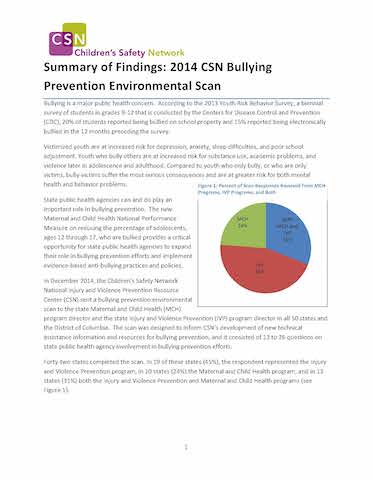
Bullying is a major public health concern. According to the 2013 Youth Risk Behavior Survey, a biennial survey of students in grades 9-12 that is conducted by the Centers for Disease Control and Prevention (CDC), 20% of students reported being bullied on school property and 15% reported being electronically bullied in the 12 months preceding the survey. Victimized youth are at increased risk for depression, anxiety, sleep difficulties, and poor school adjustment. Youth who bully others are at increased risk for substance use, academic problems, and violence later in adolescence and adulthood. Compared to youth who only bully, or who are only victims, bully-victims suffer the most serious consequences and are at greater risk for both mental health and behavior problems.
State public health agencies can and do play an important role in bullying prevention. The new Maternal and Child Health National Performance Measure on reducing the percentage of adolescents, ages 12 through 17, who are bullied provides a critical opportunity for state public health agencies to expand their role in bullying prevention efforts and implement evidence-based anti-bullying practices and policies.
In December 2014, the Children's Safety Network National Injury and Violence Prevention Resource Center (CSN) sent a bullying prevention environmental scan to the state Maternal and Child Health (MCH) program director and the state Injury and Violence Prevention (IVP) program director in all 50 states and the District of Columbia. The scan was designed to inform CSN's development of new technical assistance information and resources for bullying prevention, and it consisted of 13 to 26 questions on state public health agency involvement in bullying prevention efforts.
Forty-two states completed the scan. In 19 of these states (45%), the respondent represented the Injury and Violence Prevention program, in 10 states (24%) the Maternal and Child Health program, and in 13 states (31%) both the Injury and Violence Prevention and Maternal and Child Health programs.